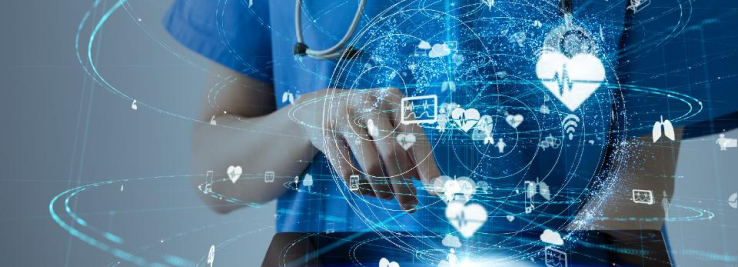|
Getting your Trinity Audio player ready...
|
The evolution of telehealth or telemedicine from consulting patients through video communication to managing patients remotely by leveraging electronic data and broadcast communication technology is the wave of AI that altered it. Artificial Intelligence in Telehealth supports long-distance health-related education, medical services, and patient health outcomes under one roof.
One of the primary pandemic-driven growth sectors is telemedicine, which quickly shifted from an option to a necessity for doctors and patients. Telemedicine services will require more local infrastructure over time as they integrate high-resolution medical imaging like CAT scans.
AI in Telehealth: Advancing Healthcare Services
AI and cloud-based systems are driving digitization, growth, and changes in the data center industry. Healthcare units with tremendous volumes of electronic health data, now augmenting healthcare services with the insights driven from it. And according to the world health organization, telemedicine is up-scaling innovation in Tele-radiology, Tele-pathology, Tele-dermatology, and Tele-psychiatry.
This transformation led an array of vendors and healthcare service providers in opting for developing platforms to optimize their healthcare requirements for better patient outcomes. One of the vital practices of leveraging telehealth is on-demand patient access, i.e., Telehealth deployment allows patients directly access the physician via the app. This reduced average waiting hours at a hospital and access to a specialist consultant directly, tremendously improving healthcare outcomes by decreasing healthcare costs.
On-demand patient access, Ambulatory or community telehealth, TeleICU, TeleEr, Surgical/Medical support, and care transition/skilled nursing facilities are recent waves of developments in Telehealth or Telemedicine. Integrating telehealth health services to monitor remote patients, educate patients, and video consultation with medical teams escalating the potential of hospitals providing their service to niche areas by limiting the re-admission.
AI Empowering Telehealth and Telemedicine
1. Assisting Eldercare
Smart applications of AI diminish the expense of delivering hi-tech healthcare administrations by improving the quality of life for patients. From digitized chatbots to care assistive robots performing magnificent operations seamlessly.
2. Remote Patient Monitoring
At present, due to the COVID-19 pandemic, the opportunities for remotely checking a patient’s well-being appear to be practically interminable. Screening the diagnostic needs of the patient to auto-generated medical prescriptions revitalizes the healthcare virtual system.
3. Offering Better Diagnosis
Telemedicine cut down the waiting hours at hospitals, and this helped hospitals in leveraging AI and predictive data analytics tools to rebuild their networking models for discovering specialists at a fast rate. With telemedicine, healthcare units are not only diagnosing general cases, but they can also diagnose diseases like diabetic retinopathy, and cancer at early stages.
For instance, clinicians at the Los Angeles County Department of Health Services reduced visits to specialty care professionals by more than 14,000 by implementing telemedicine screenings for diabetic retinopathy at its security net facilities.
Every year all over the world the number of cancer cases with brain blockage is increasing at a pace. and due to the COVID-19 pandemic, delayed treatment for cancer patients is a serious issue. whereas researchers based in the UK and the USA adopted telemedicine with advanced AI and augmented reality to diagnose patients virtually. they have also stated Ai chatbots and data analytical tools helped in offering treatments and diagnosing patients at the right time.
4. Addressing Hospital workforce challenges
AI-enabled EHR and telehealth are advancing virtual medical meet-ups to educate patients about accessing the complete benefits of virtual healthcare. Traditional hospital practices carry hectic administration tasks which could be mitigated by leveraging telehealth at the core.
Telehealth has developed considerably over recent years and now integrating AI applications augmenting scale well beyond remote patient monitoring and management. The industry-wide Telehealth or Telemedicine implementation drive to manage costs while improving outcomes, along with the increased availability of enabling technology such as high-speed Internet supporting HD video, will result in an agile healthcare networking system. This still relatively embryonic market growing rapidly over the coming years.
If you need any help with idea validation, proof-of-concept, Data Science consulting, large-scale AI implementation, Big Data Engineering, or a creative solution for your Healthcare Data. You are at the right place.
Talk to our experts

